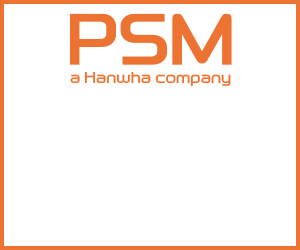With much of the time at Frame 6 meetings devoted to user presentations and deep discussion, there remains limited time for vendor presentations. Each year, the steering committee chooses two third-party vendor presentations in tune with what owner/operators are experiencing in the field. The topics selected for the 2018 meeting dealt with combustion hardware and personnel safety; both are applicable to all gas-turbine makes and models.
Fuel nozzles.
“Don’t play musical chairs with your combustion parts,” EthosEnergy’s Iain Maclean, the company’s product sales manager for HIT fuel nozzles, told the group. In a gas turbine, flame temperature and distribution are a function of both fuel and air distribution. Optimization is achieved from flow testing the gas in the fuel circuit, flow testing the liner air circuits, and then marrying the two processes for enhanced performance. With emissions limits perpetually tightening, the only way you can confidently repair is if you flow test, Mclean said.
The process of minimizing the range of variation in fuel flow to each can in a low-NOx combustion system is called “wheeling.” Its objective is to have each can operate with approximately the same flame temperature, thereby making it easier to tune the combustion system to obtain lower emissions and dynamics levels, reduce temperature spreads, and improve hardware life.
While wheeling fuel flow is helpful, the reality is that a variation in combustor flame temperature is caused by both fuel variation and air variation, not just the former. To truly minimize flame-temperature variation among the combustors, the variation in “fuel-to-air” ratio must be minimized. Combustor air flow must be known to do this.
Air flow is more difficult to determine than fuel flow because of the large effective area of the liner relative to the effective area of the fuel system. EthosEnergy has developed and offers a service to flow full liners for wheeling purposes and get the effective areas of various liner components, including:
-
- Venturi.
- Head end.
- Full liner.
- Dilution holes.
The test-stand configuration is “reverse-flow” as in a real machine and allows for investigation of a range of pressure ratios for standard, DLN1, and DLN1+ units. All testing is done at ISO conditions but EthosEnergy’s ECOMAX® combustion-tuning system can be used to balance out the changing ambient conditions onsite.
By understanding the possible variations in fuel-to-air ratio, estimates of the range in combustor flame temperatures can be determined. Pairing the components properly results in temperature-difference reductions critical for obtaining very low emissions levels and low temperature spreads. The low temperature spreads resulting from flow testing and wheeling can help buy time if any tuning issues arise during operation.
Other advantages include the following:
-
- Higher confidence level on startup after an outage.
- For multi-engine fleets with limited spares, flow-tested components can be normalized for all units to improve flexibility and reduce capital expenditures on spare parts.
Fire protection.
Fire protection is a topic in safety discussions at virtually every user group meeting, one that seems to be generating more interest as plants age. For example, systems installed 20 or more years ago have been cited for unwanted release of the extinguishing agent because of unreliable sensors. In some cases, the extinguishing agent is no longer in favor and should be replaced.
It’s important to keep safety systems current and well maintained. With the many retirements and staff changes of late, perhaps the person with most knowledge of your plant’s fire protection system is gone. That knowledge gap must be filled. The presentation by Chuck Hatfield of Orr Protection Systems is a good first step in the learning process.
Orr promotes itself as a one-stop shop for things having to do with fire protection—including alarm, detection, notification, and suppression. It provides testing, inspection, and maintenance services for all types of fire protection systems offered by the major manufacturers of that equipment.
Hatfield’s presentation addressed CO2, water-mist, and hybrid systems. The last appeared to have greatest interest. Hybrid systems, he said, are becoming more prevalent in powerplant applications—especially the Victaulic Vortex™ system. It uses a supersonic emitter to create a multi-layer shock wave of nitrogen which atomizes the water to a sub-10-micron mist, thereby creating a homogeneous suspension of nitrogen gas and water.
To dig deeper, NFPA 770 provides the standards for hybrid fire extinguishing systems using water and inert gas. Key features of these systems include the following:
-
- Nitrogen gas actively dilutes the oxygen level to quickly suppress small fires even in large rooms.
- Atomized water absorbs heat from the fire to vaporize as steam.
- As effective as high-pressure water mist system for larger fuel-based fires.
- Flame is cooled while steam displaces oxygen at fire.
- No high-pressure pumps are required.




